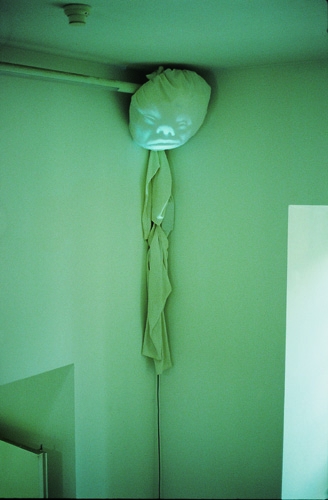
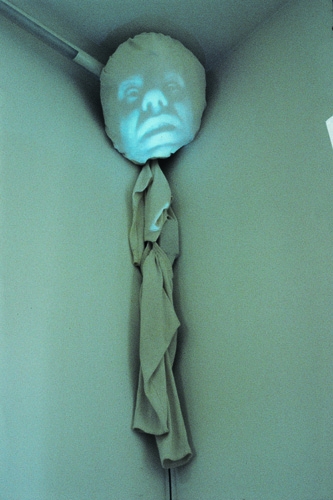
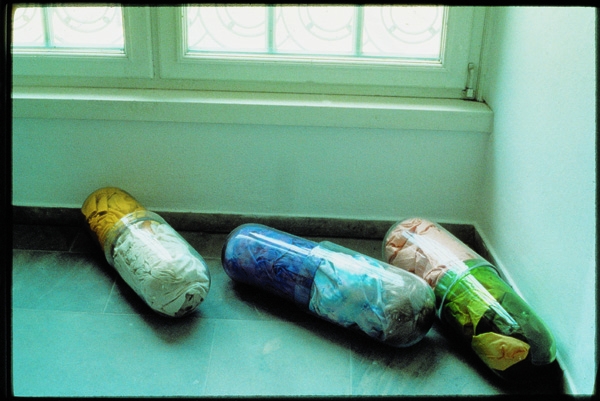
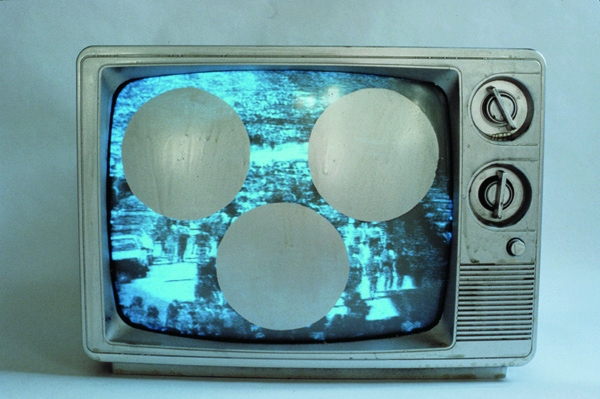
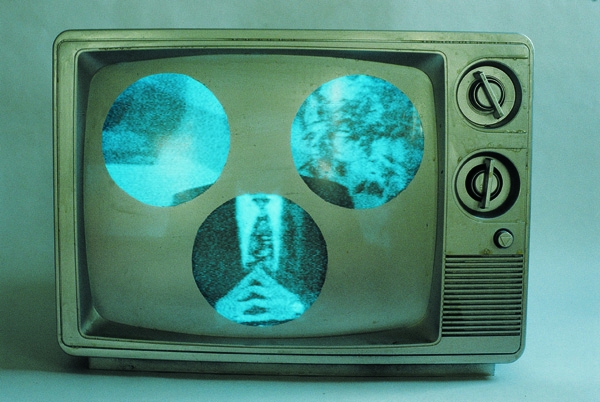
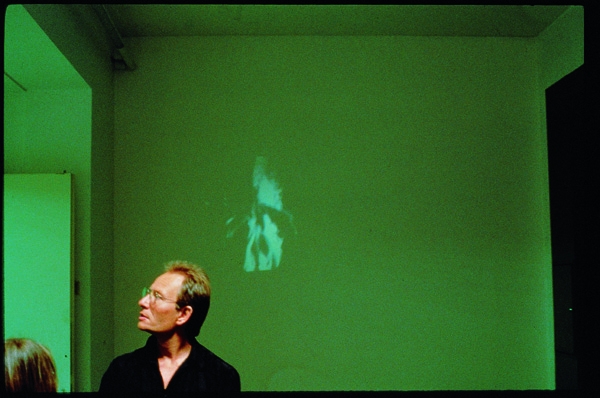
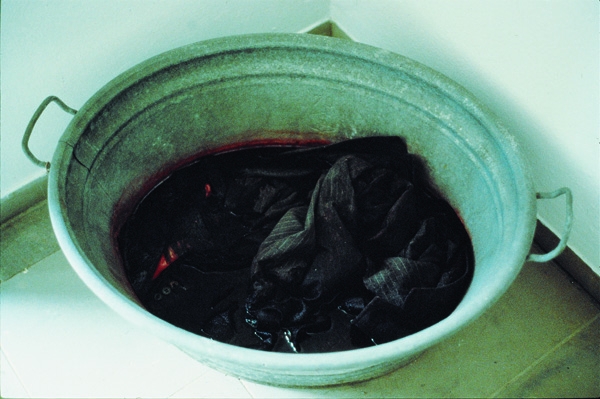
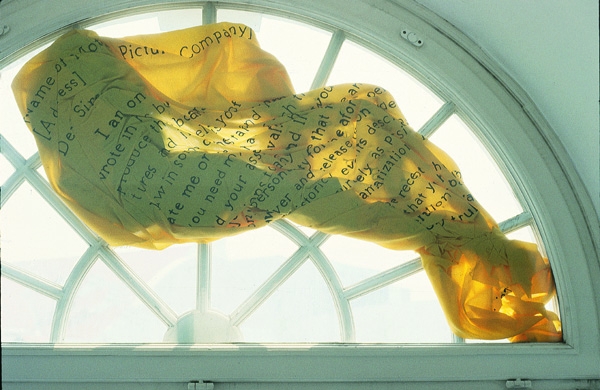
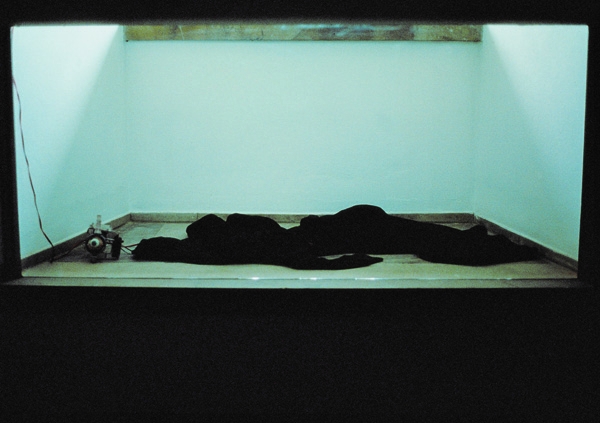
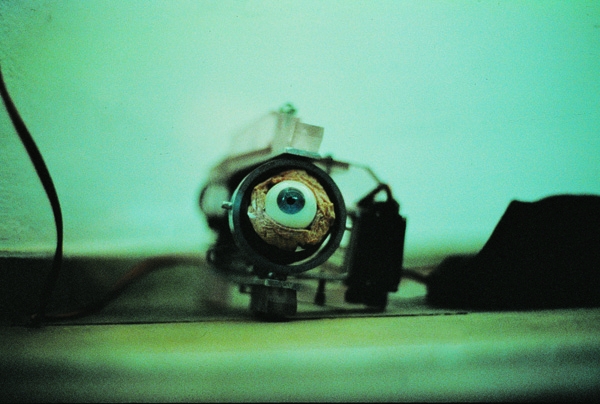
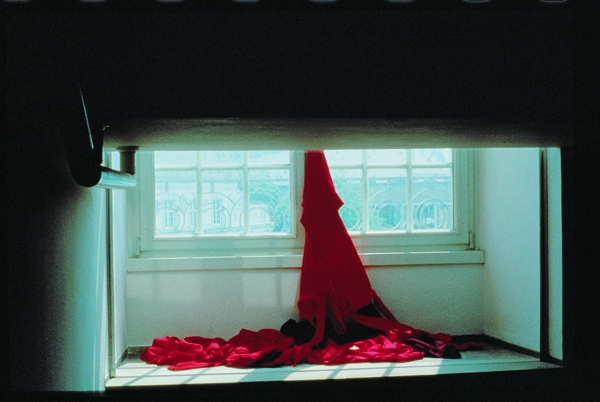
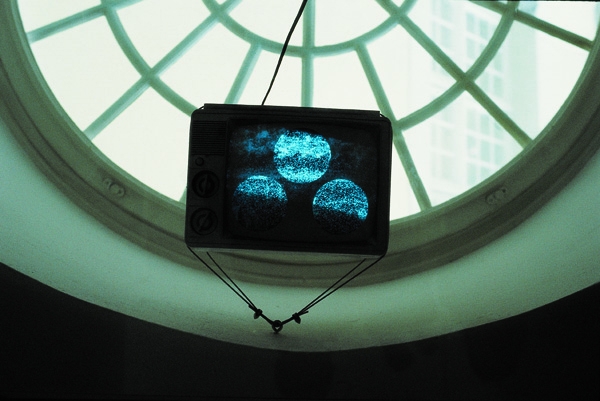
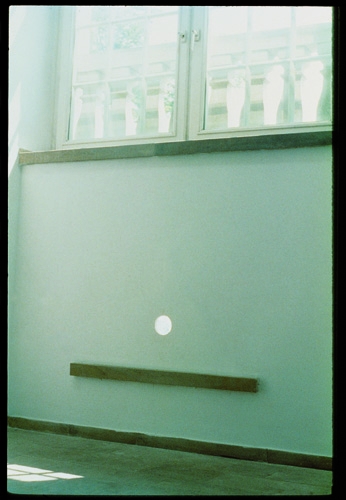
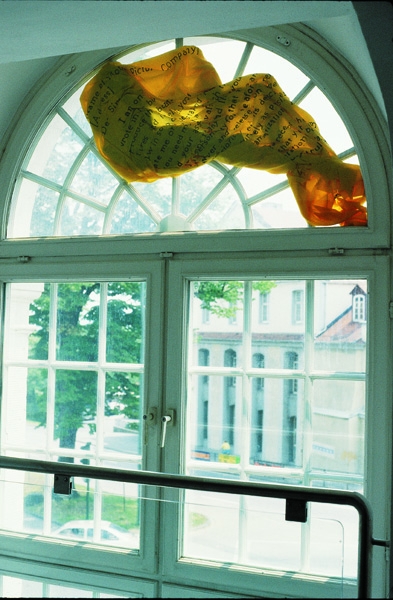
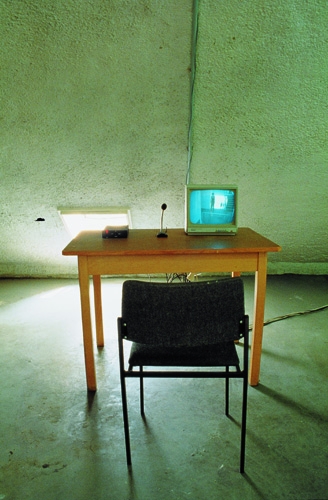
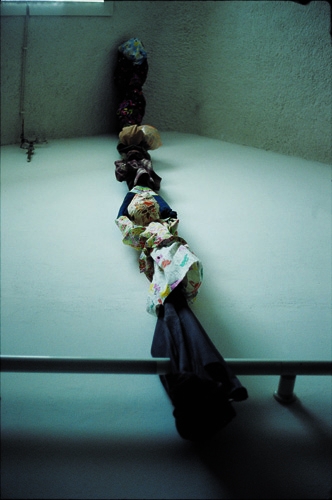
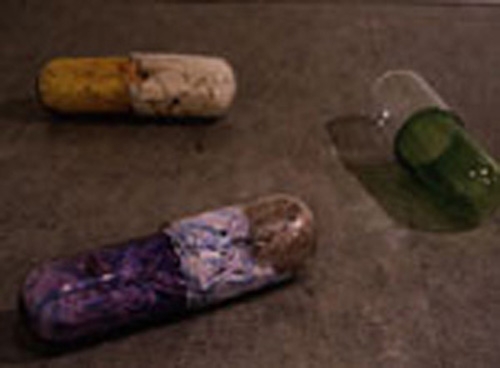
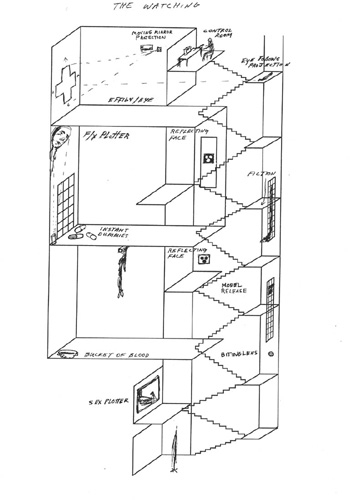
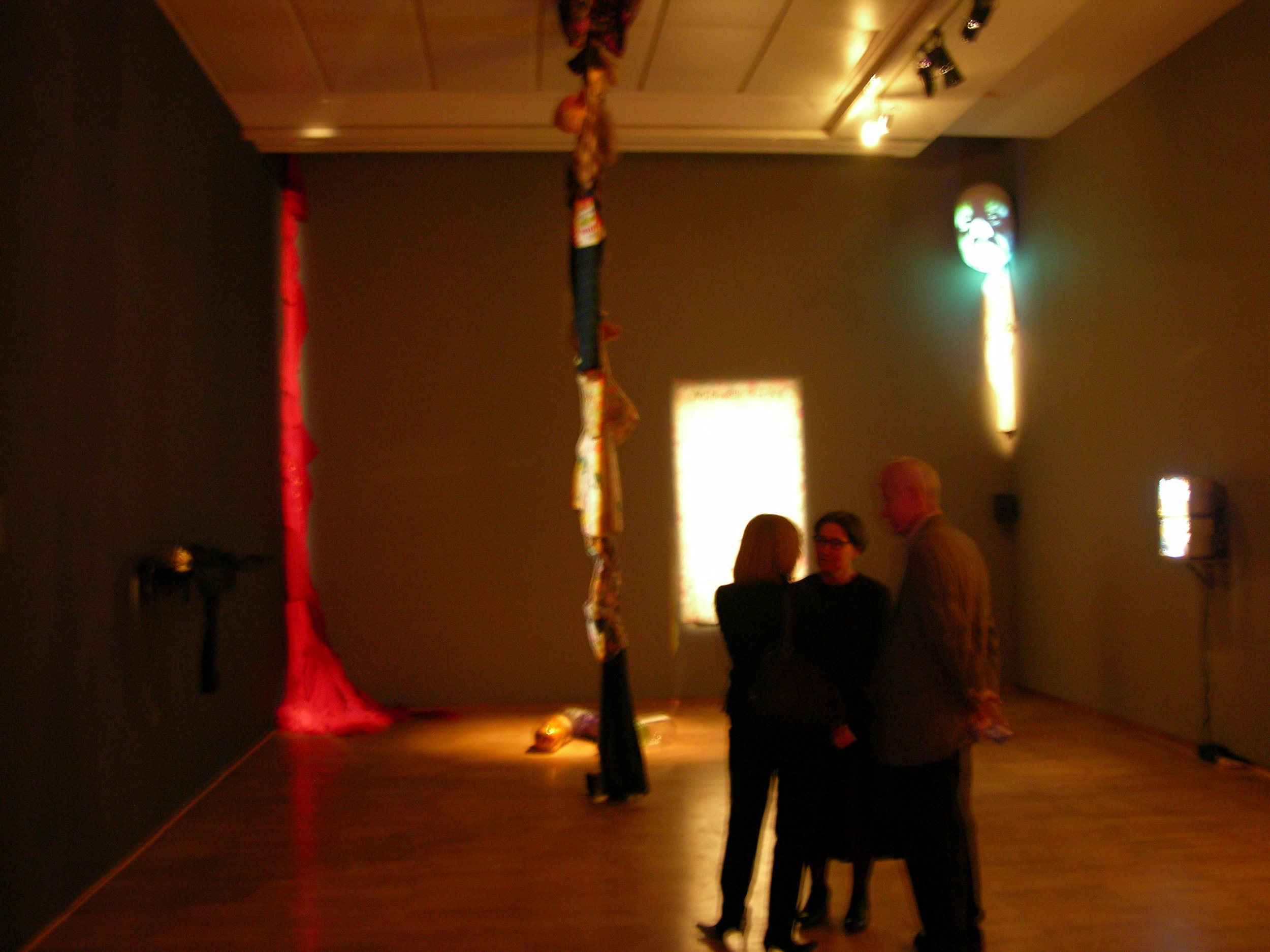
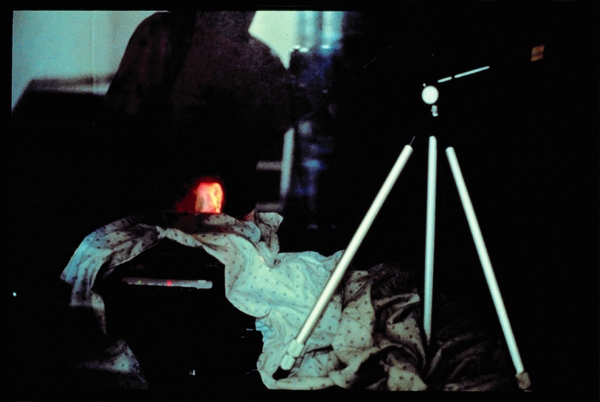
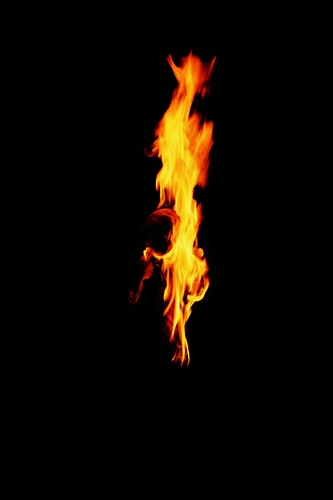
Feb. 20 - Mar. 23, 1992
The Watching is a dark and feisty puzzle in which the artist brings together themes of sex, violence, and the media, via low-tech, crude and makeshift representations - all elements that are familiar from his other videotapes and installations. Here the scale is larger and the work more enigmatic. The particular beauty of Oursler's rather gangly work is in the ways it deals with both the media and space. It is truly refreshing, and a relief, that those familiar appropriations from television, film, or the print media used as a means of addressing the aesthetics, sociology, and psychodynamics of the media, are absent from The Watching. Instead, Oursler dives in to look at the media - particularly television and film - from different, more gritty and grimy perspectives. For his audience, winding through the rooms and climbing the stairs to come across yet another peculiar prop was much more an exercise of the imagination: a first step in arriving at other responses and even analyses rather than yet another repeated, dead-out and weary discourse about the evils of our mediated culture. He commented that through looking at the mechanics of camera, viewer, and psychodrama, he was trying to make a connection in our culture between the morbid hyper-presence of sex and violence in film and television and the viewer's instinctual need to experience these reenactments vicariously. In fact, his treatment of media, with its portrayals of sex and violence, meshes with and is articulated through his use of space. The inconvenient, even unruly, spaces in which Oursler unpacked and mounted his props turned out be a happy marriage between arrangement and desire. The offer of the Fridericianum stairwell coincided with Oursler's own interests, for he had made a recent installation using a staircase in a San Francisco gallery. In Kassel, it straddled an entire stairwell from top to bottom. Oursler took advantage of the windows and created makeshift shelves in alcoves, all in a fragmented architecture covering more than five levels, if one counted the space in between the landings. Oursler posted a diagram naming and locating all The Watchings objects as well as its major and minor video elements. While the diagram was made available as an aid to confused visitors who realized that they had missed some or most of Oursler's installation in the overkill of Documenta, it inadvertently gives the work an added dimension. The objects it names - totem, dummy, effigy eye, bucket of blood, instant dummies, biting lens, disclaimer, model release form - become like props on a set. They add details to the video tales and vignettes, while the stairwell evokes escape and hiding, danger, fear, voyeurism, invisibility as we keep moving through it to see and hear and piece together The Watching.
The Watching pivots between stories of grotesque violence to the body and yarns of sex from a semi-porn psychodrama. Two characters, whom Oursler described in an interview as movie insiders, give us anecdotes from would-be scripts. Each drones on at us like a talking face that is projected all puffy and distorted onto the contour of a circular pillow. The one on violence, labelled F/X Plotter (#1) is big, aggressive, prominently placed, while the Sex Plotter is nearly hidden in a glass-enclosed case in the stairwell below ground floor level. Their sizes and locations help build the apt metaphors for the way in which American culture and media manage to repress and distort sex while at the same time thriving on and exploiting violence, especially when it is connected to sex. Elsewhere, there is a shifting video image of a burning effigy projected onto a wall in the shape of a cross. From a B-movie script? A KKK incident? A political threat? Whatever one imagines and projects. Oursler adds themes of surveillance and reflection to his cultural mix of how we dicker with the media. On the main floor landing a remote control camera hangs from the ceiling, held by the hand of a limp dummy who is also �miked" and equipped with speakers. From the attic control room, visitors monitor images and sounds, remotely moving the dummy-held camera and piping sound into the room. Because it holds the camera, we never see the limp figure on the monitor screen. We, at the controls, are that dummy.
We are watching but we are also watched, as the surveillance reminds us. Our movements trace a loop as we circulate between the control room and its monitored location. That loop is another trope for our complex relationship with the media. Two reflecting faces, each a television set bearing a very simple contour of an abstracted visage-like mask, hang from windows in the stairwell. They form Oursler's somewhat obscure link between pop child psychology and television. Instead of the child taking its cues from the parent's approving or disapproving face to shape its own identity, our models and cues come from the face of television. Are we what we watch in the picture of violence and sex and the mix of the two? Or do we somehow purge and redeem ourselves in these psychodramas that Oursler wants us to watch as we are being watched? The fragmented narratives and the chopped and sliced themes served up in his props are aided by the vertical axis of the staircases and their landings, which act as intermittent pauses, The stairs are a vehicle for time, tempting us to move up to a landing or another flight, or down one, two, or three full flights into the cellar and a cul-de-sac. Instead of setting up his materials on a single floor in a maze of rooms and anterooms, which would tend to squeeze and homogenize the space and thus the experience, Oursler's stairs and stairwells both establish a critical hierarchy of sorts by virtue of the control room at the top, and at the same time allows for the play of the imagination, puzzling together the props, sometimes under the watching eye of a camera. There are no beginnings, middles, and endings in The Watching. What unfolds in its space, does so over the course of our own time and in whichever order we choose to attack it. He gives us no answers and allows us to construct our own scripts from the props and fragments, as well as the space in between, which he makes available to us.